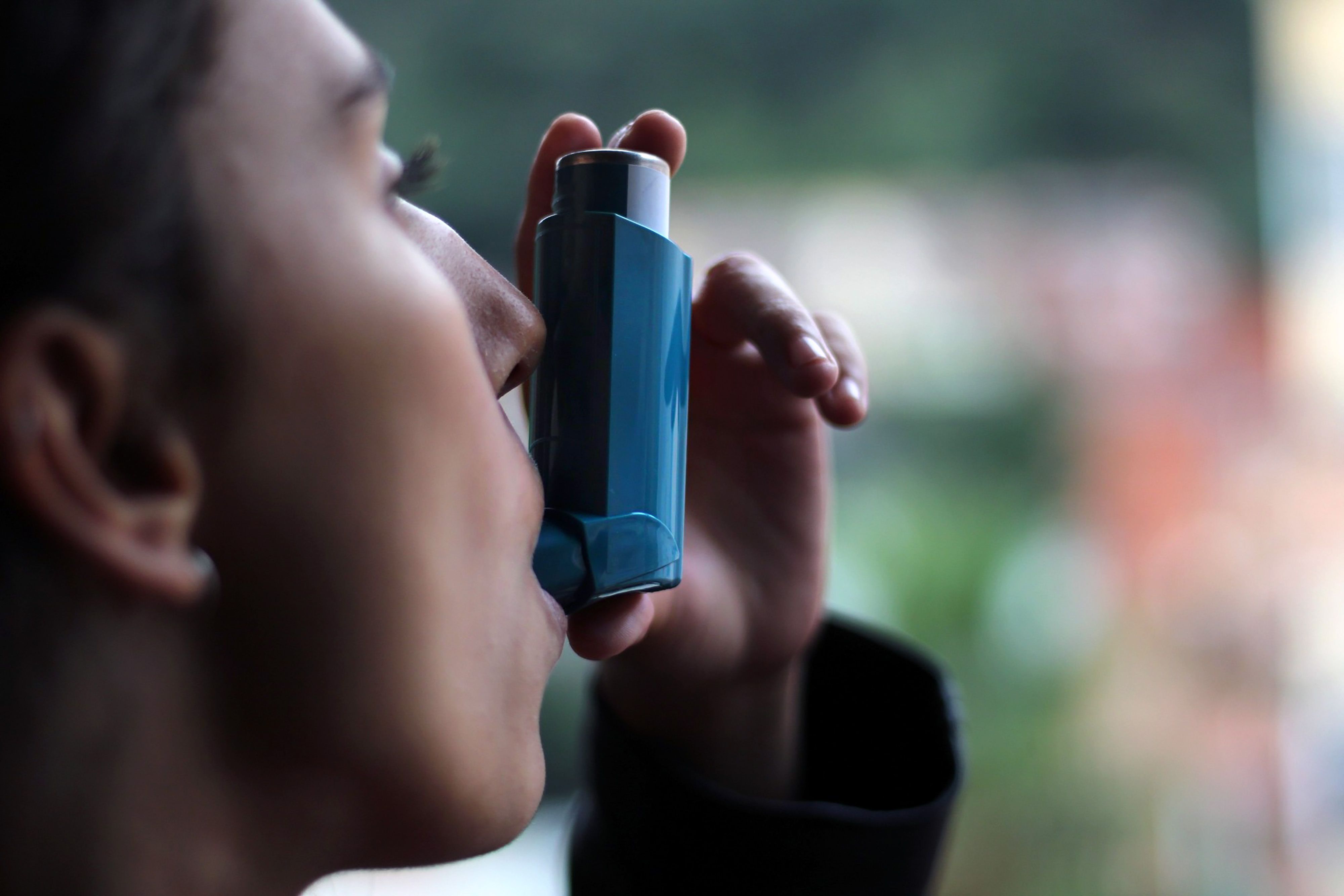- Center on Health Equity & Access
- Clinical
- Health Care Cost
- Health Care Delivery
- Insurance
- Policy
- Technology
- Value-Based Care
CHEST Posters Show Asthma, COPD Exacerbations Slashed After Single-Inhaler Triple Therapy
Two posters presented at the CHEST Annual Meeting 2023 showed how real-world exacerbation rates in asthma and chronic obstructive pulmonary disease (COPD) dropped after patients started using a single inhaler that delivers triple therapy.
Exacerbations of asthma and chronic obstructive pulmonary disease (COPD) are among the most burdensome events that can occur for both patients and the health care system. According to real-world studies presented at the CHEST Annual Meeting 2023, a single-inhaler therapy combining fluticasone furoate, umeclidinium, and vilanterol (FF/UMEC/VI; Ellipta) was effective in significantly reducing exacerbation rates in both respiratory conditions.
Health and medicine - Young girl using blue asthma inhaler to prevent an asthma attack | Image credit: © DALU11 - stock.adobe.com

Because standard asthma treatment with an inhaled corticosteroid (ICS) and a long-acting β2-agonist (LABA) can fail to control disease and prevent exacerbations in some patients, new guidelines suggest the addition of a long-acting muscarinic antagonist (LAMA) such as umeclidinium, forming a triple-therapy inhaler. Investigating this new approach in the real world, the poster focusing on asthma leveraged the IQVIA database to identify patients who initiated treatment with FF/UMEC/VI.1 Data from September 18, 2016, to March 31, 2020, were used, giving investigators a look at exacerbations in the pre- and posttreatment periods of 12 months each for all 890 included patients.
Exacerbations were prevalent in the pretreatment period, with 42.2% of patients experiencing at least 1 exacerbation, but these events were seen in just 27.8% of patients within 12 months of their index dates. The per-person-year rate of exacerbations decreased from 0.84 pretreatment to 0.50 post treatment, indicating a 41% reduction (P < .001). Most exacerbations were defined by receipt of systemic corticosteroids, as experienced by 25.3% of patients in the 12 months post treatment, whereas just 5.6% of patients had exacerbations requiring inpatient or emergency department care in that time.
Presenter Ronald C. Balkissoon, MD, of National Jewish Health, told The American Journal of Managed Care® that the findings provide “fairly robust evidence that in the real world, that addition of LAMA that you see in that single inhaler really probably helps the signal in seeing this reduction in exacerbations.” He noted that the study solely assessed the 100-mcg dose of FF/UMEC/VI, but a higher 200-mcg dose is now FDA approved, meaning the potential benefits could be greater than those seen here.
Interestingly, more than 57% of the patients in the study were from the South, a region that is “often underserved, and to see the signal maybe reflects that when people enter in a study that they’re being given medicine” that they wouldn’t have otherwise had access to, Balkissoon said.
Another CHEST poster examined the same treatment, this time in patients with COPD who switched from an ICS/LABA to the triple-therapy inhaler.2 Using the Optum claims database, investigators identified 1449 such patients, 62.6% of whom had experienced an exacerbation in the 12-month pretreatment period. In the posttreatment period, that proportion decreased by 15% to 53.5% (P < .001). Pronounced results were seen in the 907 patients who had experienced at least 1 exacerbation, as their mean number of exacerbations decreased from 2.03 to 1.40 after beginning treatment with FF/UMEC/VI (P < .001).
Presenter Emmeline Igboekwe, PharmD, an employee of the product’s manufacturer GSK, noted that these results “support GOLD [Global Initiative for Chronic Obstructive Lung Disease] recommendations of triple therapy over ICS/LABA, and they also provide real-world evidence of the benefit of stepping up to FF/UMEC/VI.” She also hinted that the research team intends to reveal findings on associated health care utilization and hospitalization in a forthcoming publication.
References
1. Bogart M, Germain G, Laliberté F, et al. Reduction of asthma exacerbations following initiation of single-inhaler triple therapy with fluticasone furoate/umeclidinium/vilanterol in US clinical care. Poster presented at: CHEST Annual Meeting 2023; October 8-11, 2023; Honolulu, HI. doi:10.1016/j.chest.2023.07.4209
2. McCormack MC, Noorduyn SG, Gronroos N, et al. Reduced chronic obstructive pulmonary disease exacerbations after switch from dual therapy to single-inhaler triple therapy in a real-world health care setting in the US. Poster presented at: CHEST Annual Meeting 2023; October 8-11, 2023; Honolulu, HI. doi:10.1016/j.chest.2023.07.3204
